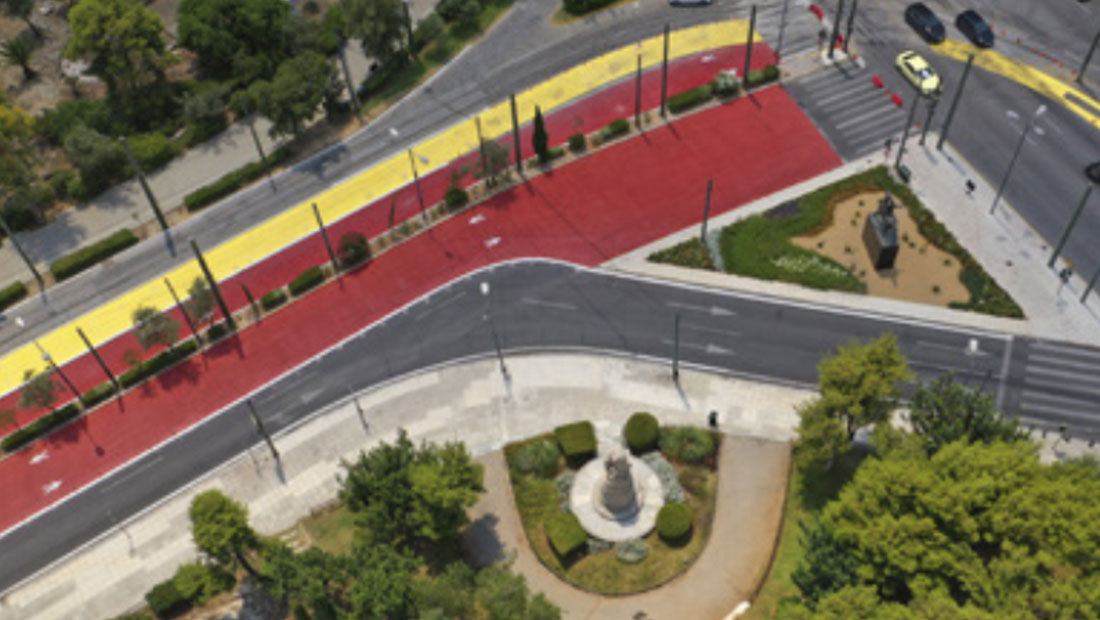There are easy answers, i.e. is it right to expect an answer “yes or no” as to whether a road will be closed or opened and whether it will be pedestrianised?
A big debate for those who live in Athens is the fate of Vasilissis Olgas Avenue. It is important to hear the opinion of experts who, with their scientific knowledge, can tell us what criteria and procedure can be used to decide whether a road or an avenue in a city is pedestrianised, opened up or becomes traffic calming.
This issue is fundamentally technical-political, it is neither technical nor only political. In the technical part of the transport sector, the situation is relatively simple. Our roads, such as Vasilissis Olgas Avenue are opened to pedestrians or opened to vehicles depending on what kind of city we want. If we want a city that serves vehicles, which in any case the traffic is balanced in congestion, it should be opened to vehicles. If we want a city for pedestrians and a better quality of life, then, it should be opened to pedestrians.
Even if the issue of Public Transport has not been resolved?
To a large extent the problem of Public Transport is due to the passenger cars that take up space on the bus lanes, illegally moving or illegally parked, so that the same buses make the half trips, because they go too late due to passenger cars. If we get the passenger cars out of the way where they are interfering with the buses, the latter will be upgraded. Therefore, it is a vicious cycle that has to be broken at some point.
But there is also the familiar issue of putting down the map of the Athens metro and fixed rail networks compared to other European capitals. We do not all have an accessible station near us, do we? Is that not also a parameter?
First of all, Athens needs 200 metro stations and it has only 80. Secondly, in the central areas serving the city centre, there are 7 metro stations and 50 bus stations. And let’s not embellish what is happening in other cities, because both the metro and the buses are saturated and everywhere there is less comfort in Public Transport compared to our cars. They have simply changed their habits and serve more people who travel by Public Transport than those who travel by passenger cars and are everywhere either parked or in traffic. It is an excuse to say we do not good service. Obviously, we need more, cleaner and tidier ones. The main criterion of commuters for choosing a transport mode is time. The time of Public Transport, especially buses, is dependent on passenger cars. We have to break this priority of passenger cars.
Concerns such as “There are so many thousands of passenger cars in Athens or that Ippokratous, which is not an Avenue, does not have enough space. Isn’t it a Gordian Knot? How can this balance be changed?” the answer is that the same problem exists everywhere and for several decades in big cities. The Gordian Knot was solved by giving priority to buses, regardless of whether there is space for parking and traffic for cars. It is known that when you give them more space, they will take it, while when you give them less space, they will adapt. For instance, they will start buying less cars, they will start not having 2 and 3 (vehicles) per family, they will sell the old ones. Do you know that 1 in 3 vehicles is uninsured, hasn’t passed a Roadworthiness Test or doesn’t pay road tax and is taking up road space? If we reallocate space in favour of pedestrians and Public Transport, watch how slowly vehicles will rebalance both parking and traffic. These are phenomena of scale, which is now technical, if you like, and not political.
For the “issue” with the closed Vasilissis Olgas over the last two years, it is noted that it was not closed, it remained opened to pedestrians and closed for cars. It is clear that the interpretation is given depending on what our goal is.
The closure of Vasilissis Olgas was an example of adaptation or not by the drivers themselves. Did drivers ultimately adapt to such a change?
All the measurements revealed that traffic in the city centre has increased less than it has increased on Kifissos, Alexandras Avenue and the wider Athens area. The centre of Athens has not been burdened by a local axis, such as Vasilissis Olgas and much less by the countermeasures in Syntagma and Panepistimiou, where the only achievement was to remove illegally parked cars and turn them into sidewalk. Therefore, the measurements do not show any huge difference.
Since September last year, there are very few days that we do not suffer from traffic jam, especially during peak hours.
Athens is collapsing in terms of traffic. Transportation Engineers have been saying this for decades and nothing is being done, no measures are being taken. The fact that all roads of the Capital of Greece are collapsing is also affecting Vasilissis Olgas. It is not the fault of Vasilissis Olgas that we have more traffic. There is traffic increase on Kifissos and Alexandras Avenue; there is traffic increase everywhere.
Lastly, it is worth pointing out that Athens is collapsing because traffic will obviously and inevitably continue to increase. It is important to hear from the scientists what the solutions are, because measures are not taken but only on a case-by-case basis. The measures have a cost.
Interview in the broadcast Ston Aera at Parapolitika 90.1 radio station in November 2023

